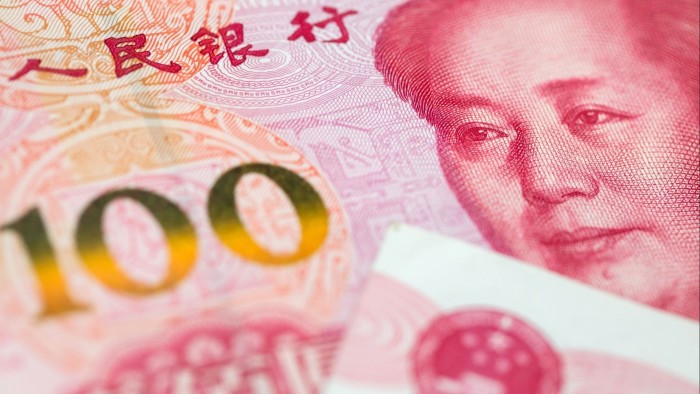Unlock the Editor’s Digest for free
Roula Khalaf, Editor of the FT, selects her favourite stories in this weekly newsletter.
The writer is an economist and also sits on the board of the Bank of China (UK). He writes in a personal capacity
China faces a currency trilemma. Should its policy be for the renminbi to strengthen, depreciate or stabilise? There are immediate arguments against each option so a longer-term approach is needed.
Beijing should encourage a stronger renminbi and adjust domestic policy so this is seen as credible by the financial markets. It would suit China’s longer-term ambition of a stronger future role for the renminbi and a shift to a multi-polar currency system.
This trilemma is evident because of sluggish growth in China and dollar weakness.
Beijing is wary of appreciation in the country’s current economic environment, with the impact of intense domestic competition a policy concern. Producer prices are falling. Consumer price inflation is around zero. A fear is a stronger currency would entrench deflation, discourage consumption, undermine the effectiveness of monetary policy and embolden fiscal policy when concerns about debt persist.
Instead, currency stability is favoured but this is problematic. China pursues a managed float against a basket of currencies, with a long-standing policy of letting the market play a decisive role. The market focus is on the rate against the dollar.
In the face of recent volatility, Beijing has kept the renminbi stable versus the dollar. In turn, it has weakened against regional currencies when many of them have rallied against the dollar, as companies and institutions have hedged their dollar exposure. If the dollar weakens further, regional currency instability would intensify with a contagion impact on growth.
Gearing policy to stabilise the renminbi risks subjugating domestic policy to an exchange rate policy when domestic demand is sluggish. China’s monetary policy is accommodative and rate differentials versus the US could push the renminbi weaker.
Devaluation should be avoided, too. At times last year, market sentiment pushed for renminbi depreciation in line with regional peers such as the yen and won, and the IMF echoed this. That is where the focus was this April when tariffs hit. The market’s view was that if domestic demand lacks momentum, a weaker renminbi can boost exports and growth.
But this would exacerbate trade tensions and trigger competitive devaluations across Asia. Internal competition in China could depress import prices elsewhere. Instead, appreciation makes sense.
In terms of global trade imbalances, countries with persistent trade surpluses, such as China, should see their currencies appreciate, savings fall, and consumption rise.
The renminbi is currently undervalued. Bank for International Settlements data shows China’s real broad effective exchange rate has fallen by over one-sixth in three years.
However, a shift in domestic policy would be required if the renminbi strengthened. China’s savings rate is elevated. Boosting consumer spending would help to balance this. While it has grown at a steady rate, consumption’s share of GDP is still low. Recent subsidies to boost spending made sense. The central government has scope for more, as the debt problem is in property and local government.
As the ratio of investment to GDP is so high, at over 40%, it is hard to imagine all of this is productive. A stronger renminbi would support China’s ambition to climb the value chain with a shift towards more value added investment in green technologies and artificial intelligence.
A stronger currency would support Beijing’s desire of internationalisation of the renminbi. Demand for offshore yuan bonds would rise and foreign holdings of domestic bonds increase from low levels.
It would influence thinking about the future credibility of a multicurrency system. The dollar accounts for 58 per cent of global reserves, although the trend is down. In global payments, its share in May was 49 per cent, with the euro at 23.6 per cent. The renminbi was 2.9 per cent.
The renminbi’s global role is understated. Despite controls on the capital account, its use has risen since its entry into the WTO in 2001. China has become a dominant trading partner for many countries, and more bilateral trade and investment is settled in renminbi. China has its own cross-border interbank payments system (Cips) and makes much use of bilateral swap lines. The central bank digital currency it is developing with others, mBridge, will lower the cost of cross-border payments.
Companies dealing with China may now find it cheaper for trade finance to borrow in renminbi than dollars. To offset a rising renminbi, Beijing could encourage that by ensuring emerging countries borrowing in renminbi do so on a hedged basis, while benefiting from low interest rates.
The focus of the market is on US currency policy and whether a dollar devaluation is consistent with its dominant role in trade and payments. Beijing’s policy towards the renminbi will help shape the outcome.
https://www.ft.com/content/dd9eec8b-eb4d-4bf1-92c1-b5a5cfc4540f


